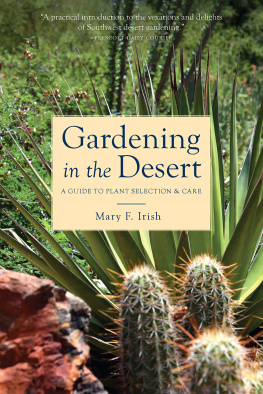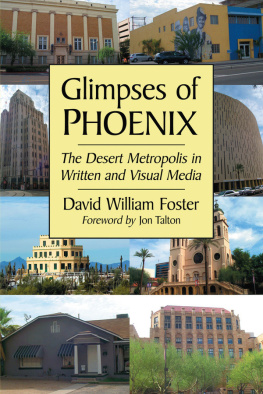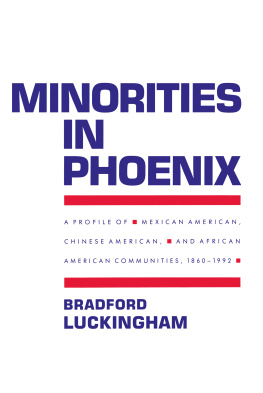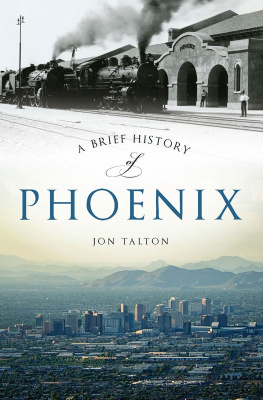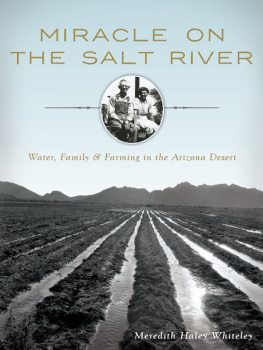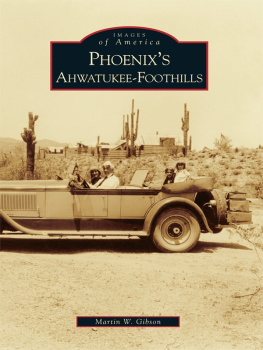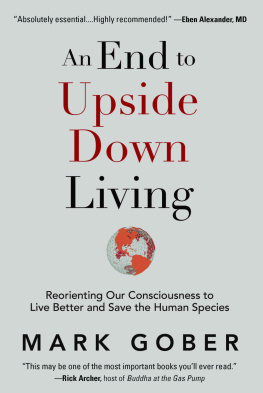Patricia Gober - Metropolitan Phoenix: Place Making and Community Building in the Desert
Here you can read online Patricia Gober - Metropolitan Phoenix: Place Making and Community Building in the Desert full text of the book (entire story) in english for free. Download pdf and epub, get meaning, cover and reviews about this ebook. City: Philadelphia, year: 2005, publisher: University of Pennsylvania Press, genre: Science / Politics. Description of the work, (preface) as well as reviews are available. Best literature library LitArk.com created for fans of good reading and offers a wide selection of genres:
Romance novel
Science fiction
Adventure
Detective
Science
History
Home and family
Prose
Art
Politics
Computer
Non-fiction
Religion
Business
Children
Humor
Choose a favorite category and find really read worthwhile books. Enjoy immersion in the world of imagination, feel the emotions of the characters or learn something new for yourself, make an fascinating discovery.

- Book:Metropolitan Phoenix: Place Making and Community Building in the Desert
- Author:
- Publisher:University of Pennsylvania Press
- Genre:
- Year:2005
- City:Philadelphia
- Rating:5 / 5
- Favourites:Add to favourites
- Your mark:
Metropolitan Phoenix: Place Making and Community Building in the Desert: summary, description and annotation
We offer to read an annotation, description, summary or preface (depends on what the author of the book "Metropolitan Phoenix: Place Making and Community Building in the Desert" wrote himself). If you haven't found the necessary information about the book — write in the comments, we will try to find it.
Inhabitants of Phoenix tend to think small but live big. They feel connected to individual neighborhoods and communities but drive farther to get to work, feel the effects of the regional heat island, and depend in part for their water on snow packs in Wyoming. In Metropolitan Phoenix, Patricia Gober explores the efforts to build a sustainable desert city in the face of environmental uncertainty, rapid growth, and increasing social diversity.
Metropolitan Phoenix chronicles the burgeoning of this desert community, including the audacious decisions that created a metropolis of 3.6 million people in a harsh and demanding physical setting. From the prehistoric Hohokam, who constructed a thousand miles of irrigation canals, to the Euro-American farmers, who converted the dryland river valley into an agricultural paradise at the end of the nineteenth century, Gober stresses the sense of beginning again and building anew that has been deeply embedded in wave after wave of human migration to the region. In the early twentieth century, the so-called health seekersasthmatics, arthritis and tuberculosis sufferersarrived with the hope of leading more vigorous lives in the warm desert climate, while the postwar period drew veterans and their families to the region to work in emerging electronics and defense industries. Most recently, a new generation of elderly, seeking active retirement, has settled into planned retirement communities on the perimeter of the city.
Metropolitan Phoenix also tackles the future of the city. The passage of a recent transportation initiative, efforts to create a biotechnology incubator, and growing publicity about water shortages and school funding have placed Phoenix at a crossroads, forcing its citizens to grapple with the issues of social equity, environmental quality, and economic security. Gober argues that given Phoenixs dramatic population growth and enormous capacity for change, it can become a prototype for twenty-first-century urbanization, reconnecting with its desert setting and building a multifaceted sense of identity that encompasses the entire metropolitan community.
Patricia Gober: author's other books
Who wrote Metropolitan Phoenix: Place Making and Community Building in the Desert? Find out the surname, the name of the author of the book and a list of all author's works by series.


